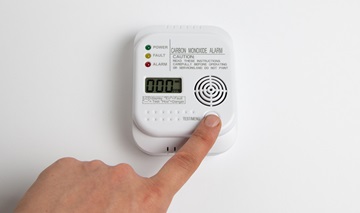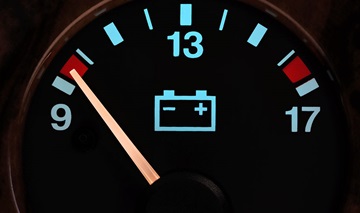Replace or Recharge? That Jump-started Battery May Have Years Left
When any vehicle hasn’t been driven for a long time, plenty can go wrong with it.
Fortunately, there’s a lot you can do to maintain a long-sitting vehicle.
While parked, a battery keeps the onboard computers and memory circuits active. They store the data from previous drives that makes every ride smooth: throttle position sensor info, transmission module memory, mass airflow sensing and more. Without these stored memories, drivers would experience unusual engine idling, strange transmission shifts and the loss of any settings.
If parked for a month and a half in hot weather, a battery can get severely depleted.
The car may not even start.In that case, the electrical system may be disrupted and potentially damaged once the vehicle is up and running again.
However, that doesn’t necessarily mean the car battery needs to be replaced.
Especially if it still has a warranty.
You haven’t solved your customer’s problem if you swap out the battery without a proper diagnosis. It may be a starter or a charging issue. Without finding the true problem, it’s highly likely your customer may have another breakdown as soon as 30 days after they left your shop. And that’s not a good customer experience. Our 2018 market research study into multi-point inspections also uncovered how customers might to react such an experience. If a battery failed 30 days after a battery test, 34% of consumers said they would never return to a shop. And 17% would post a negative review on social media.
Instead, here’s how a battery test can lead to true customer satisfaction.
Here’s what to check before you replace a car battery
A jump-started battery may actually need to be replaced. Or it may merely be discharged and have more life in it.Here’s how to be sure.
Ask your customer for information.
Gather as much information as possible from the customer about when starting the car became an issue. Specifically, ask these questions:
- Has this vehicle been used at all in the last three weeks or longer?
- How much use? Have you used it once a week or driven fewer than five miles?
- Was the vehicle stored with a charger or maintainer connected to the battery?
Test the battery.
- Use a conductance tester, such as the IB Pulse®, to get a reference point to start.
- Test results may likely show “Charge and Retest.” Recharge the battery completely.
- After recharging, you’ll need to dissipate the surface charge, the extra voltage that comes with a full recharge. A conductance tester or OBD-II reading can show whether a vehicle still has a surface charge. Surface charges dissipate on their own after several hours. Auto techs, you don’t have to wait that long.
PRO TIP: Turn the headlights on for 30 seconds to dissipate any surface charge. - Retest the battery with your conductance tester.
If it shows “Good”: Keep the battery in the vehicle.
If it shows “Replace”: Replace and proceed with your normal warranty process.
Whatever you do, share the results with your customer.
Good customer service depends on communication, and you’ve got something to share. Always share the test results.Many drivers feel a personal connection to their vehicles — and they want to hear from you about what happened and why. Your tester’s read-out offers an objective point of data for your customers.
And a 2018 research study into multi-point inspections confirmed what common sense already knows: Your customers (84% of those surveyed) want to replace a battery before it fails.
So, share the tester’s full diagnosis. Then explain how leaving car parked for a long time can affect the battery inside.
Here’s what you can say:
IF IT’S GOOD AFTER A RECHARGE:
“While parked, a car’s battery keeps the onboard computers and memory circuits active. They store the data from previous drives that makes every ride smooth. However, if the car’s parked for a long time, a battery can get severely depleted.
However, after a recharge, yours is testing just fine.
Let’s schedule another battery test with us in six months and stay ahead of any issues.”
IF IT NEEDS TO BE REPLACED:
“It’s a good thing you came in when you did.
If a car is parked for a long time, the battery can get severely depleted. When the engine’s off, it still powers all the onboard computers storing data that creates a smooth drive for you.
And that can destroy an already weakened battery. A new battery can handle it. Here’s an article that explains what you can do to protect your car’s battery if it’s parked a long time.
Battery testing leads to true customer satisfaction
Always conduct a thorough battery test and share a result.You’ll show the quality of your work in a moment of crisis for your customers — and they’ll remember you the next time they need help.
For more helpful tips, check out these related posts.




